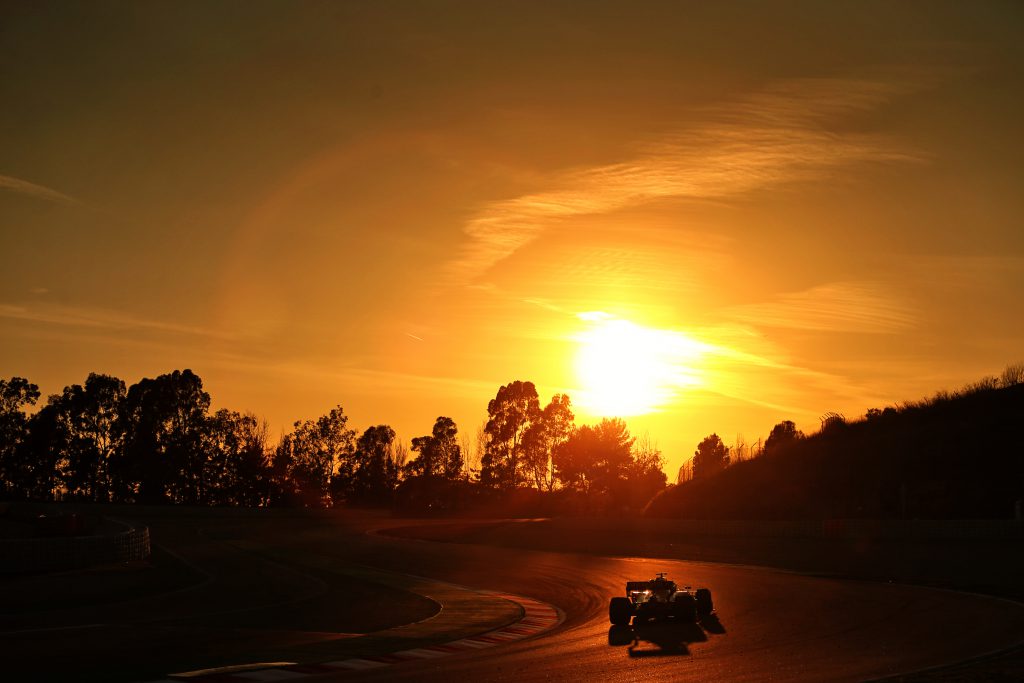Up Next

Watching the cars from trackside during pre-season testing can tell you a lot. Throughout testing, viewing from all around the circuit allows you to build up an accurate picture of how the cars are behaving and how consistent they look.
In terms of what you are looking out for, if you can get to the correct angle looking through a corner you have the chance to see the outside of the front tyre. On the good cars, you can’t quite see the side of it but some of the others have more understeer so you can pick up the side of the tyre.
Nowadays, the cars have become so good as they have so much downforce, performance-wise that is the limiting factor. From the front to the back there’s very little difference in the cars, but what you will see is just that little bit less grip, which then turns into some understeer and that can lead to the cars running slightly wider. That’s visible in most corners at Barcelona.
You can also stand right at the side of the track for the approach to Turn 1, which gives you a good feeling of how the cars perform under braking. Are they consistent, or are they locking brakes or carrying too much speed sometimes?
You can normally tell if cars have got a high fuel load depending on the levels of acceleration and how sharp the car looks, which also helps you to understand what you are looking at.
Each corner has its own character, and by seeing the way the cars behave, you can add to what you learn from lap times to get a better idea of who looks good and bad.
Mercedes
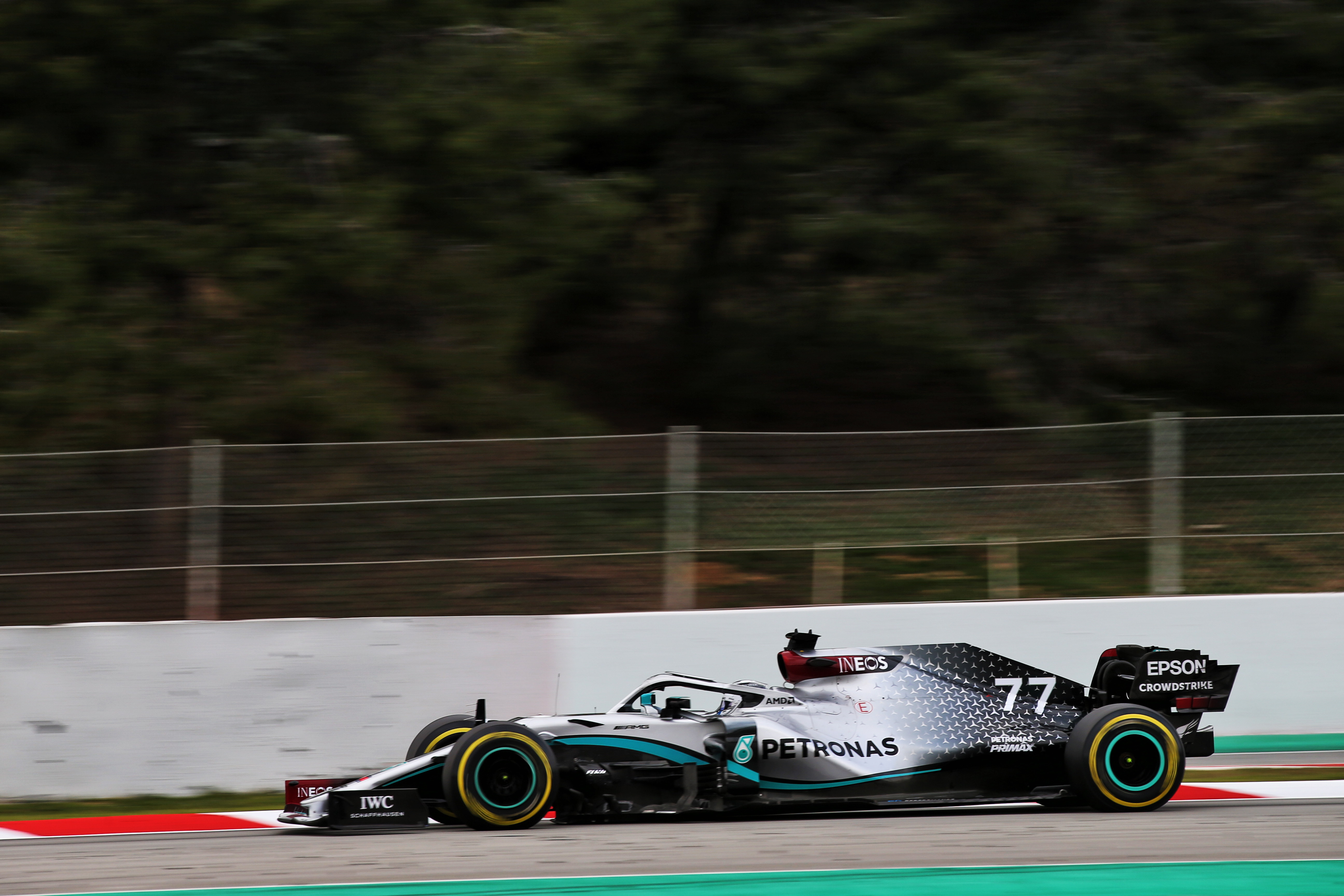
Watching all around the circuit, the Mercedes does look exceptionally good.
The Mercedes looks very strong into Turn 1 and the drivers have a lot of confidence in the rear of the car, which is what you need to turn the steering wheel aggressively without the rear end stepping out. The drivers can also keep a tight line to get through Turn 2 with the throttle flat and then carry the speed into the long Turn 3 right-hander.
At Turn 8, when they ride the kerb going up the hill, the car is very good over the kerbs. It moves, but it moves in a controlled way. It’s also consistent in the slow corners in the final sector. The Mercedes just looks all-round good, which is better than it has looked in pre-season testing previously when it has sometimes appeared to be on a bit of a knife edge.
The car is very stable, looks good on the brakes, turns in well, the gearchange is crisp. All of the boxes appear to be ticked.
Red Bull
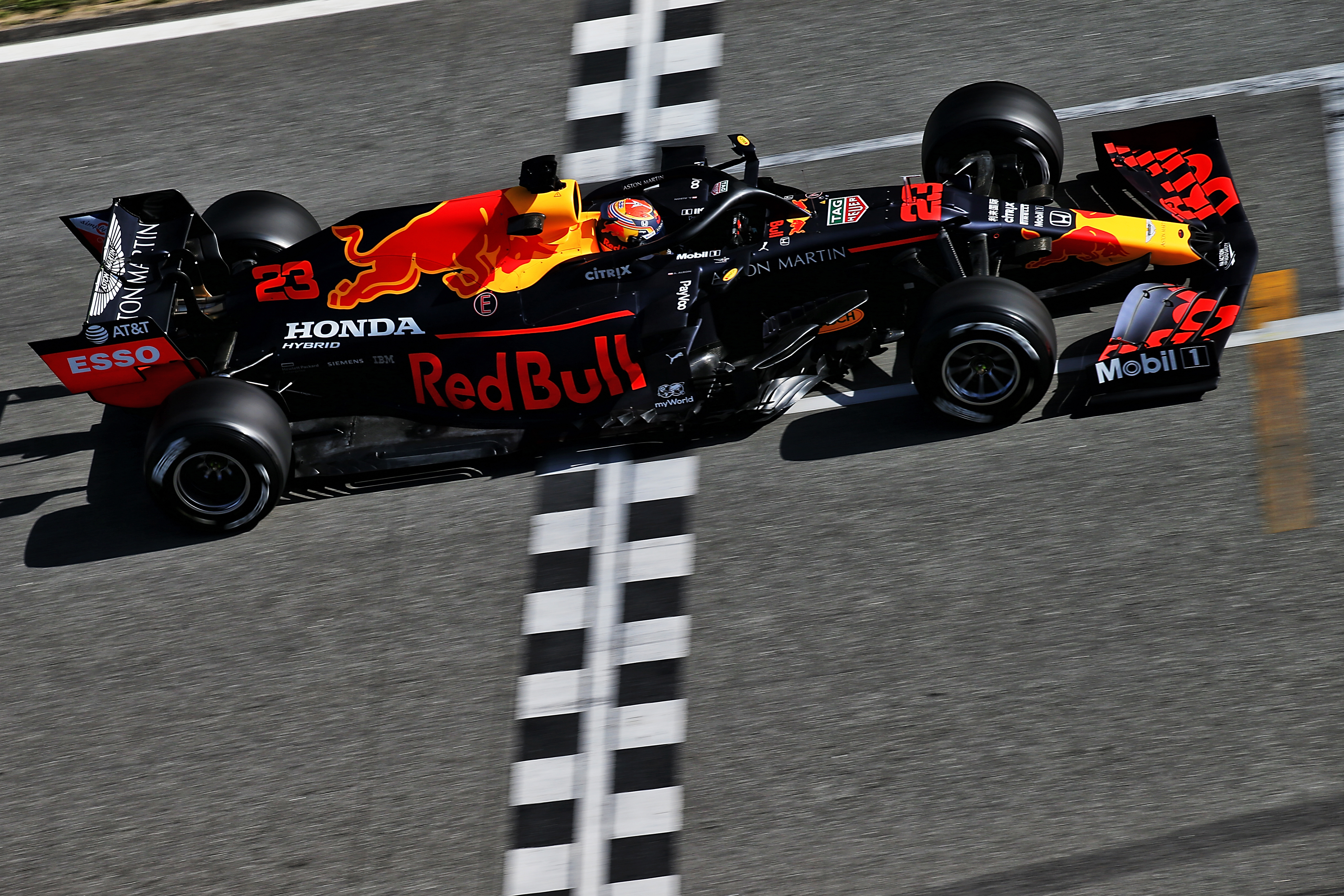
At times the Red Bull looked exceptional, but on the final day it didn’t quite look as strong. There was nothing majorly wrong, the car was doing everything very well, but it just looked like the drivers were needing to hustle the car as opposed to the times coming naturally.
There are a few hints of instability, which is shown by how many times Max Verstappen and Alex Albon had spins and excursions. The Red Bull is a high rake car and that takes some effort to make the concept work correctly.
You have to ensure that your aerodynamics and the vortices that are generated to help seal the sides of the under floor actually function correctly or you will get some downforce inconsistency. On the track with varying wind conditions and different steering locks, this problem can be magnified.
Red Bull will optimise all of this in CFD and the windtunnel but it can be different on the track, especially when the wind gets up. The car has usually been good in slow corners but Red Bull has yet to optimise the RB16 in these corners.
Ferrari
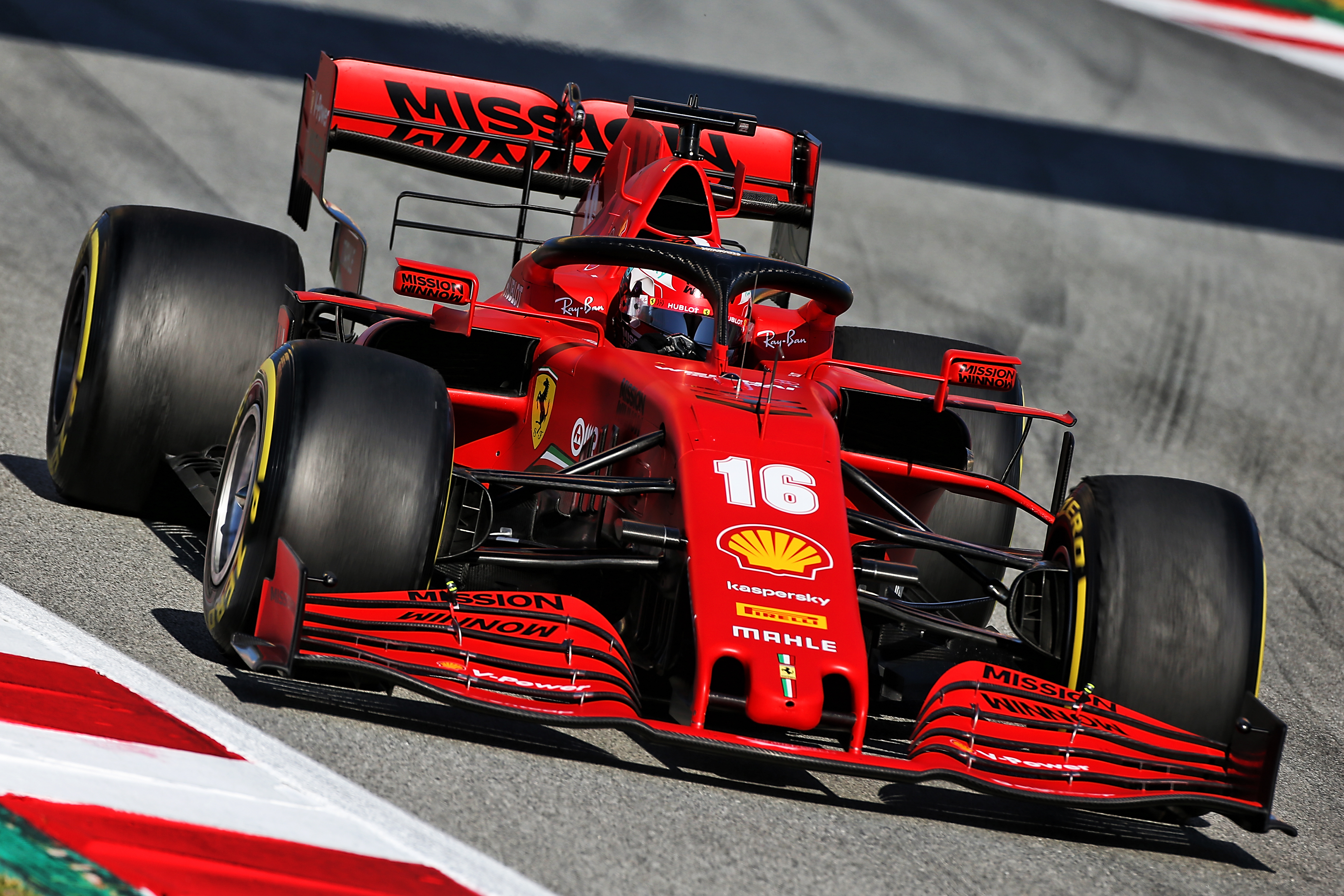
I don’t see anything major to complain about with the Ferrari. But, if anything, the front end was probably washing out more than it should be.
This wasn’t so much in the slower corners, but in the longer corners – which there are a lot of in Barcelona – the front end mid-corner was not optimised.
The car did look fairly heavy, it didn’t accelerate off the corners particularly aggressively for most of the laps that I was watching. It’s very difficult to say if Ferrari was indeed running with a detuned engine specification.
A typical example of what you look at is the speed mid-corner in Turn 3, you need the GPS data to judge this correctly.
Teams will compare the speed of the Ferrari to their own car and if it is faster mid-corner, they are either running less fuel or have more downforce.
That combined with straight line speed will give you more of a clue. If a car is faster in the corners and slow on the straights, it probably has more downforce. If a car is faster in the corners and fast on the straights, it’s probably running less fuel than the comparative car.
Then you will have a look at acceleration coming off a reasonably slow corner. If they accelerate faster then they will have less fuel or more power, so with all this data a team should be able to hone in on where the performance of a competitor is coming from.
But it does appear the Ferrari car has a little more drag which, combined with often running heavy, contributed to this impression.
Through Turn 5 on a quick lap, Charles Leclerc stays out a good half a car’s width, maybe three-quarters, from the inside kerb. There’s a lot of camber on the track there and whereas the Mercedes could clip the kerb, the Ferrari stayed wide. That suggests the Ferrari isn’t as compliant as far as vertical and roll stiffness is concerned and doesn’t ride uneven track surfaces so well.
On slow laps, the drivers do use the inside line there but the car doesn’t want to be there on push laps.
Racing Point

The Racing Point RP20 has become known as the Pink Mercedes because of its resemblance to last year’s championship winning car. Fortunately for the team, it also looks a lot like a Mercedes on track.
There is nothing dramatically wrong with it, it uses the kerbs well, it’s stable, there’s no major understeer. This is a very good package even by the standards of today’s cars but the drivers have confidence to attack, which they didn’t always have in the team’s previous cars.
McLaren
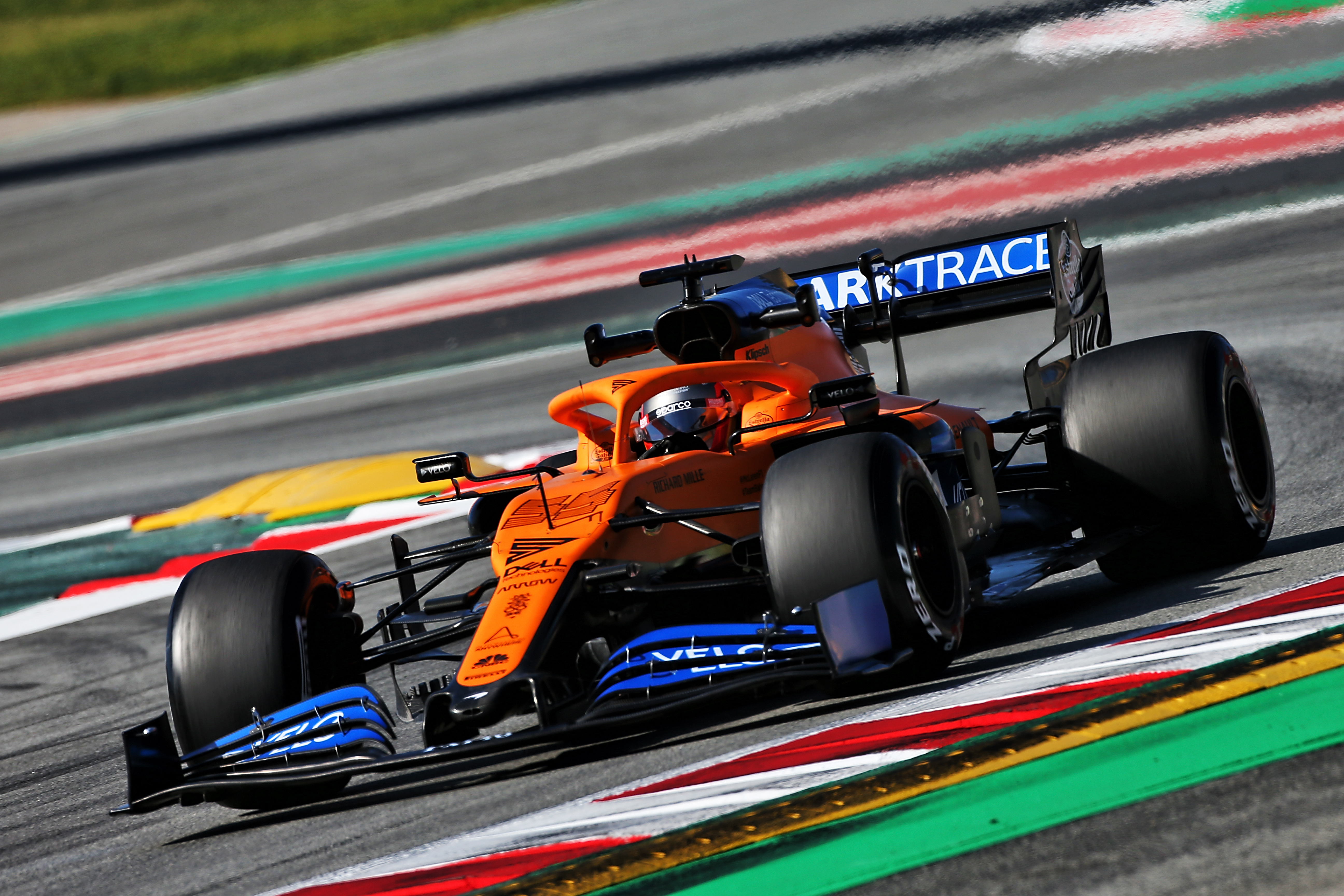
The McLaren looks cumbersome at times and doesn’t seem to leap forward when the drivers hit the throttle, which suggests that the car was often running heavy. But that doesn’t mean it doesn’t look good.
It does look better than it was in pre-season testing last year, it’s consistent and gives the drivers confidence.
Watching at Turn 3, Sainz uses a fairly different line to everyone else. Most drivers turn in, clip the inside at the entry then let the car run out. But Sainz takes a tighter line round most of the corner and he’s a good half a car, maybe a car’s width, to the right. That keeps you away from the marbles and doesn’t need to use that space.
Whether that’s quicker or not is hard to say, normally it’s better to free the car up by using all of the track, but it can hold this tighter line which could pay off at a few other tracks.
Renault
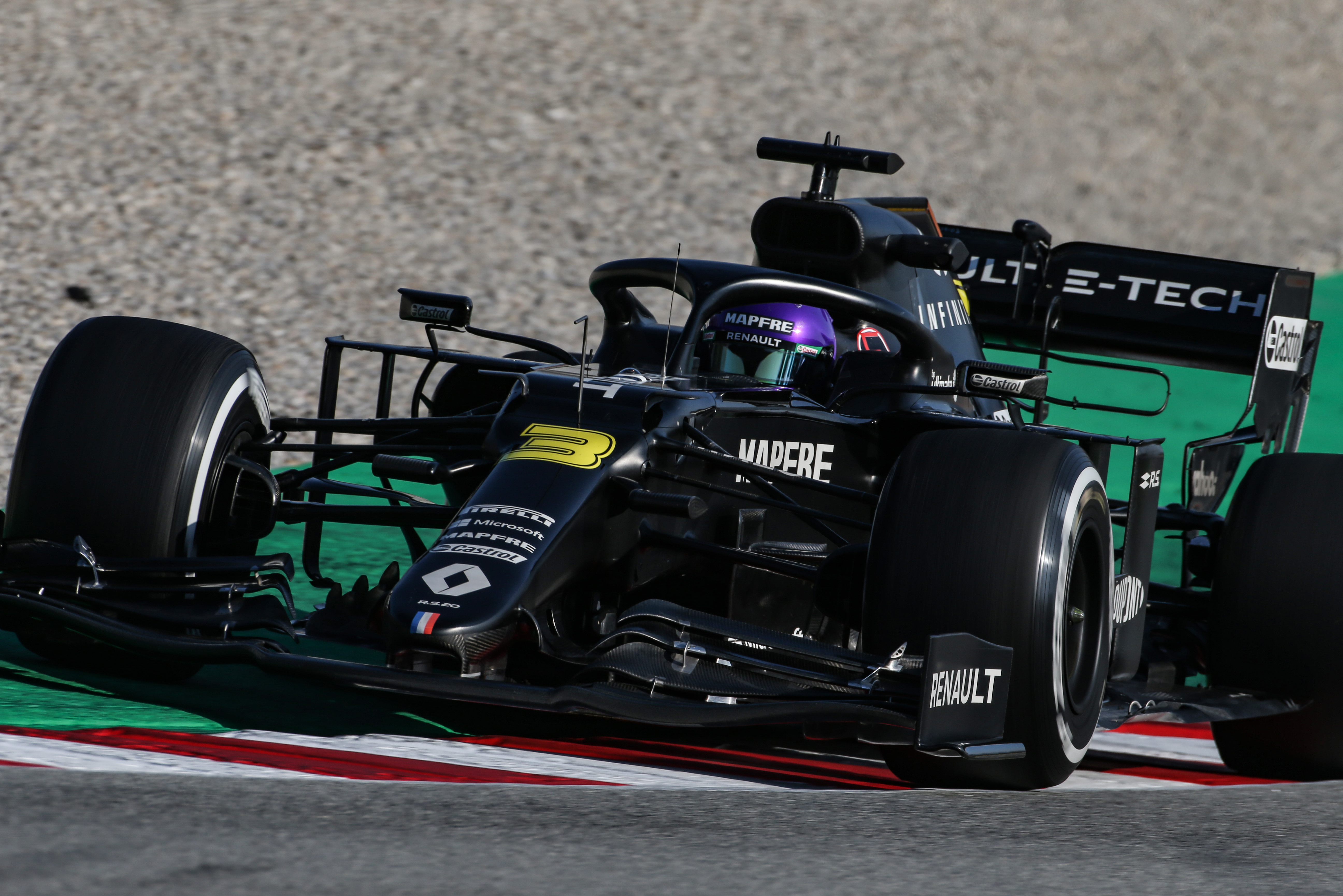
If you had to pick out on team with a car that has something that needs to be fixed, it’s Renault.
Just on the exit of Turn 2, there’s a dip in the track and when the cars are coming out of that dip they bottom out and you get sparks from the skidplate underneath the car. The Renault had much longer spells of sparking whereas for others it would probably only last a metre or so. Renault’s is odd because it lasts 10 metres or so.
Going into Turn 1, when Esteban Ocon was hustling the car on the final morning, you can see the understeer but then the front end bites and then the rear snaps. Other cars, say the Alfa Romeo, had the same understeer but the front doesn’t bite so there’s no snap, meaning a very different recovery from the same situation.
Looking further around the track, I’d say Renault is trying to fix that understeer by making mechanical changes to the front suspension. The aero changes that I have seen over the test days also suggest it’s tackling an understeer problem as well, but they seem to be trying to fix it mechanically.
Renault appears to be trying to hold the front of the car with a more fixed ride height, either using more rebound on the damping or the inerter isn’t tuned to allow the car to find its equilibrium as good as others. At Turn 8, there’s a kerb you use with a yellow sausage kerb they all go across and the Renault seems not connected in the middle.
By that I mean it takes the bump at the front, then at the rear and it does that four or five times whereas the Mercedes has a quick bounce then stops. So the Renault doesn’t absorb the bumps and recover so well.
I’m pretty sure they have an aerodynamic understeer problem, especially in medium and slow-speed corners and it’s trying to fix it mechanically.
AlphaTauri

The AlphaTauri looks very much like the Racing Point and the McLaren in that it does everything it’s supposed to do with no big vices.
It’s well balanced but just lacks a bit of grip because the drivers have to use more road in Turn 3 than, say, the Red Bull as it is sliding that bit more. But it’s not having huge understeer or a snappy rear so it’s a reasonably well-balanced car with a little understeer that allows the drivers to attack.
AlphaTauri has a good base there to work from.
Alfa Romeo
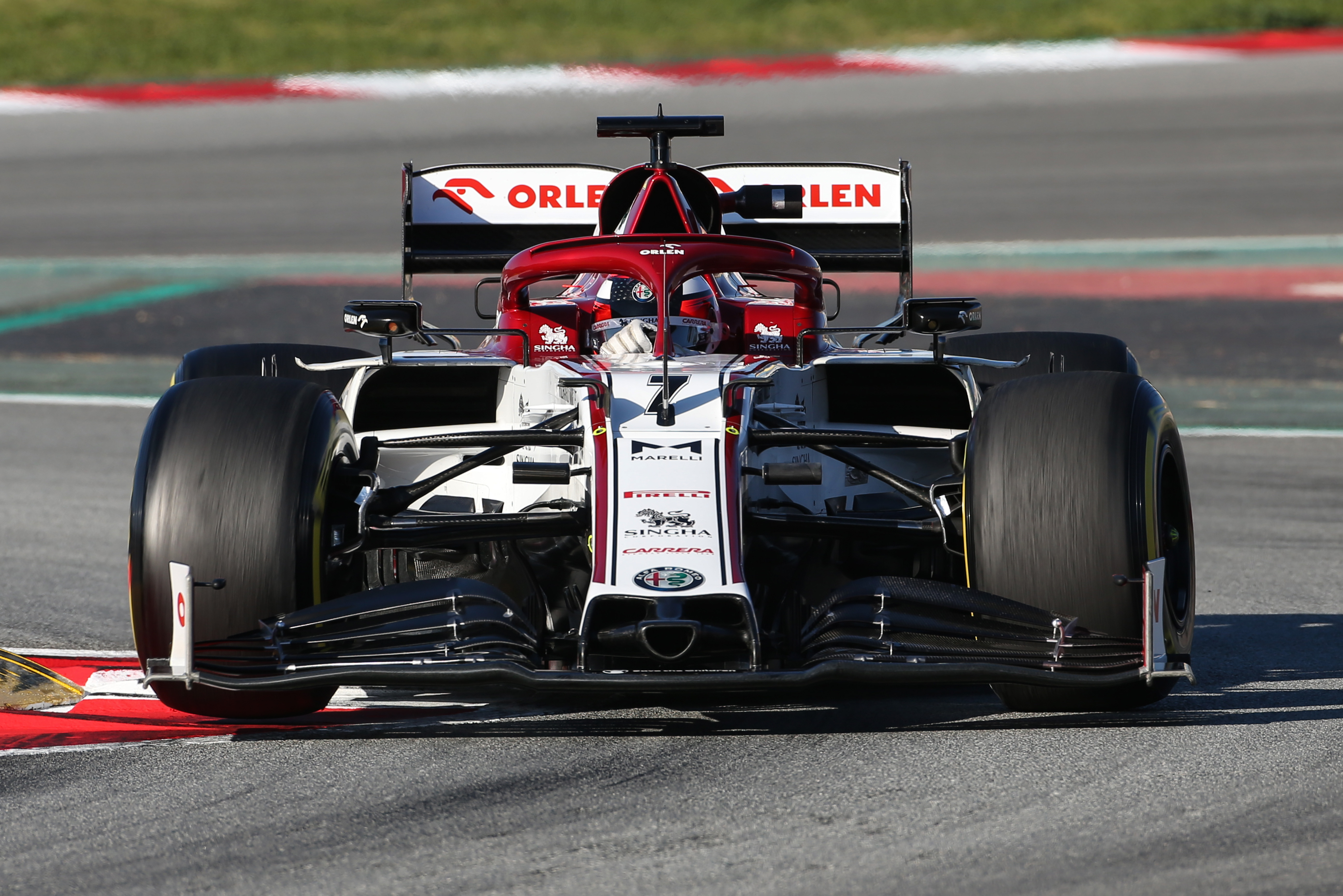
It’s a car a bit like the AlphaTauri in that it doesn’t have the overall downforce, but the difference is it has a lot more understeer.
That balance is clear, as even though it doesn’t have the overall grip, the front end is the limiting factor. The front and rear wing developments they ran in the second test didn’t make a lot of sense to me, the front in particular being something that will make it more sensitive.
As it gets nearer to the ground, the downforce increases, and the front wing won’t stall in some corners, but in others it will. So sometimes you have a car that might be too pointy, but others the front will wash away. Both from trackside and looking at the front wing, Alfa Romeo seems a little mixed up with how to address the front wing sensitivity.
We have seen the drivers go off a few times, perhaps caught out by that sensitivity. So Alfa Romeo has a lot to think about.
Haas
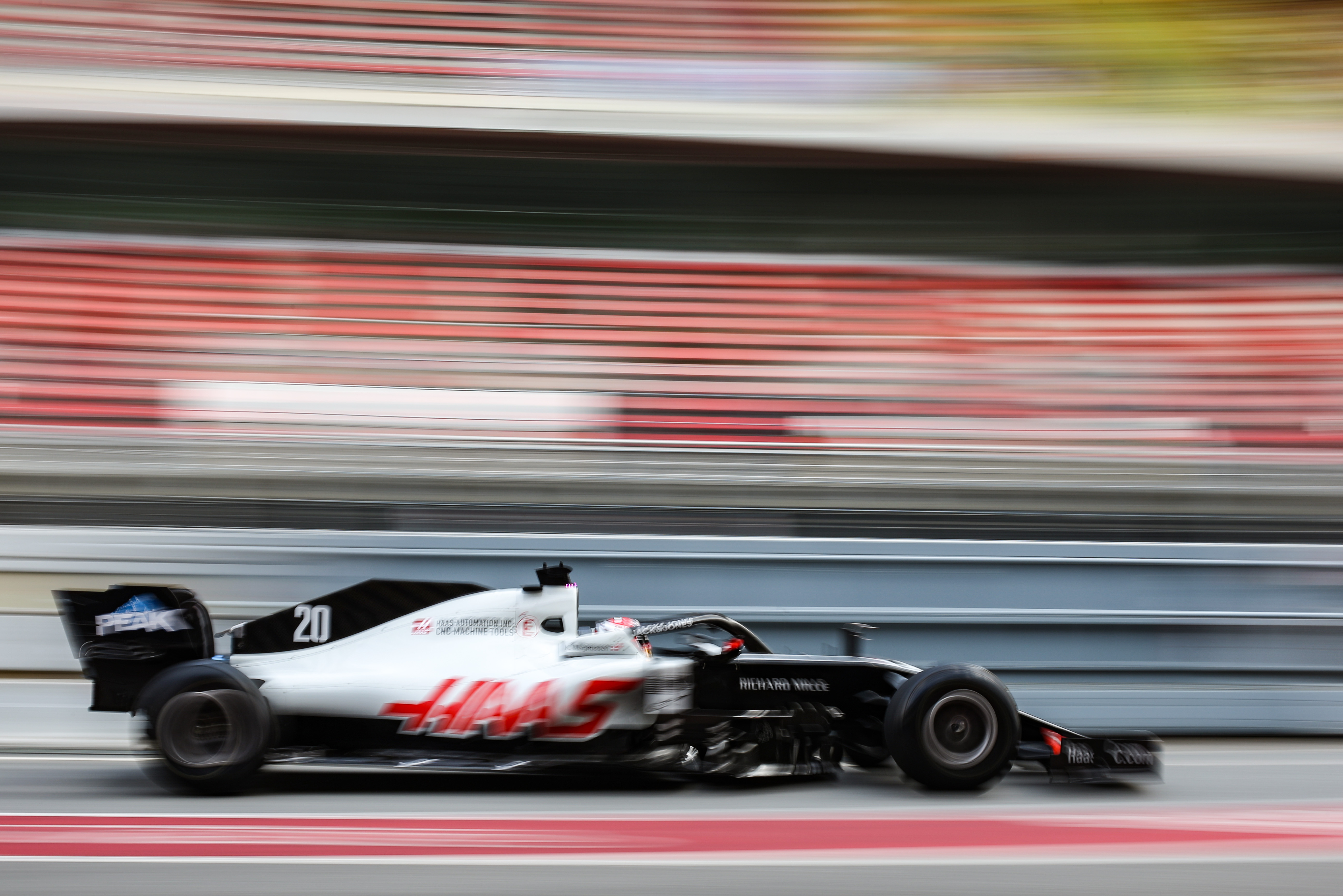
There’s nothing visibly wrong with the Haas, but when it does give up the drivers can get into a bit of a tankslapper fairly easily.
But that’s just the limit of the car rather than something wrong, at 98% it’s fine but at 100% the car just gives up a little. A lot of cars do this, but unlike the AlphaTauri that just slides nicely, it gives the drivers a bit of a movement.
So there is a bit of a concern that the car can give up at either end when the drivers push so there could still be that aerodynamic problem where it’s not quite robust enough when the drivers are right on the limit.
Williams
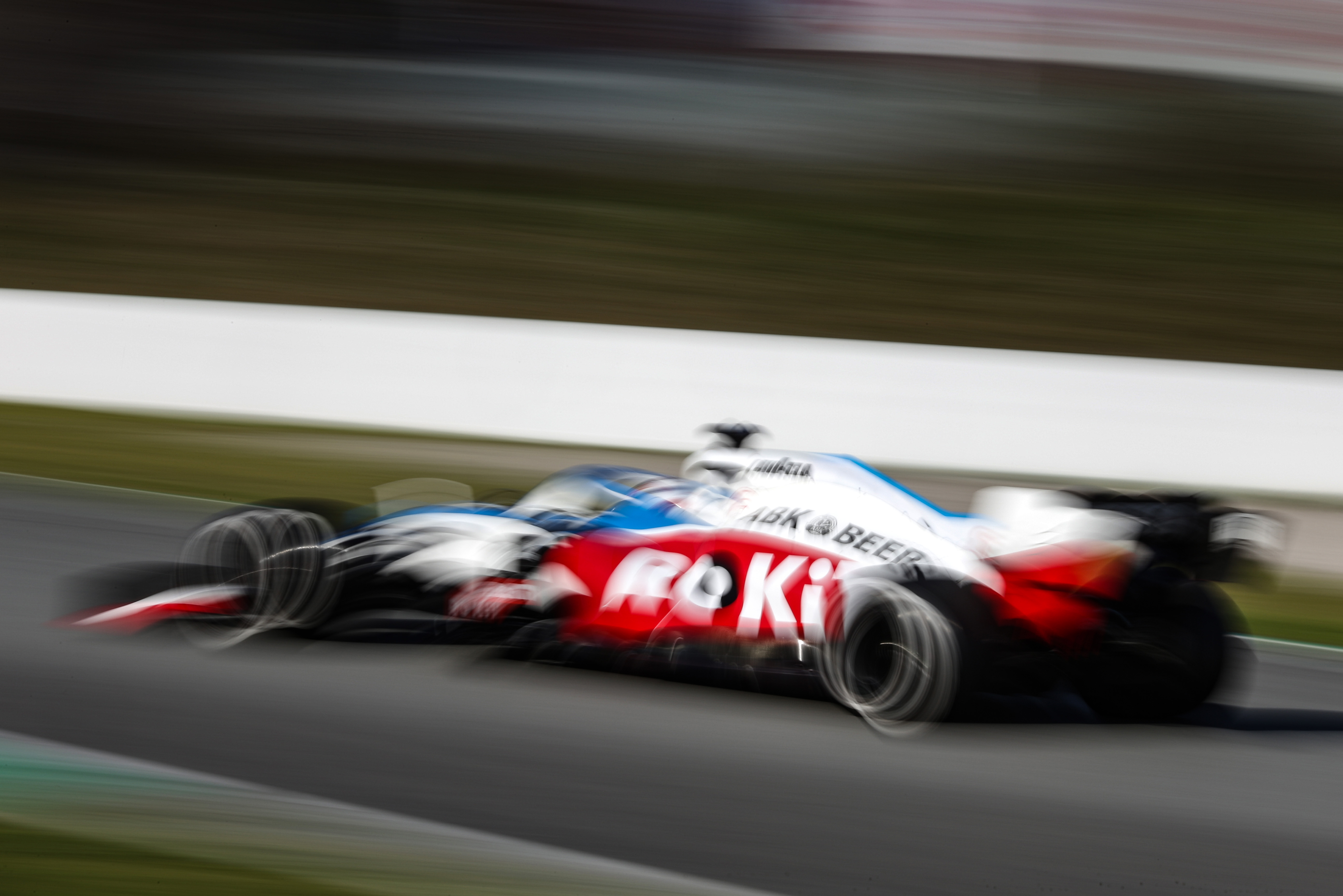
The car was actually very impressive and the recovery from last year looks massive. The new aerodynamic philosophy that Williams appears to have defined as its requirements is a major step forward and has no big vices. The few moments we do see are normal when drivers are pushing on.


